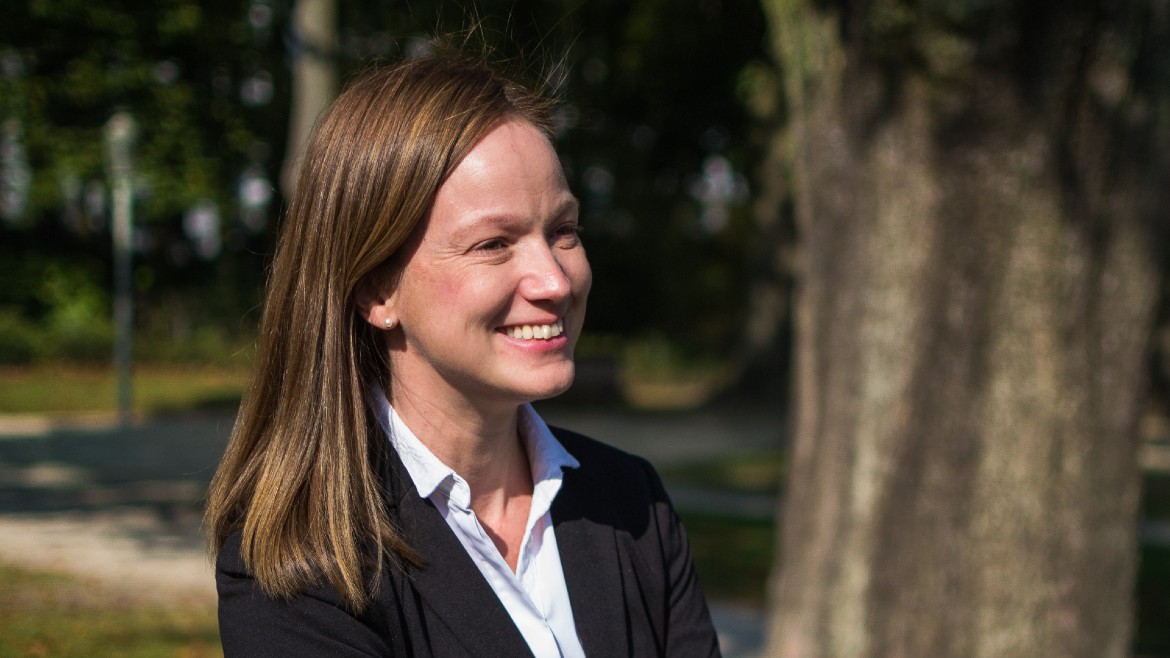European Quality Assurance agencies’ response the COVID-19 pandemic - from fire-fighting to re-thinking external Quality Assurance

Maria Kelo is the Director of ENQA, the European Association for Quality Assurance in Higher Education (since 2011). She has expertise in both policy and practice of quality assurance, and has previously worked on internationalisation of higher education.
European Quality Assurance agencies’ response the COVID-19 pandemic - from fire-fighting to re-thinking external Quality Assurance
As the Covid-19 pandemic hit Europe in spring 2020, also quality assurance [QA] agencies needed to confront a situation they had never faced before. The institutions they were tasked to review had been closed, with no staff or students on campus. Travelling between counties, as well as within countries, was severely restricted. Keeping review processes running as usual was naturally not possible under these circumstances.
Agencies realised that institutions needed to free resources from non-urgent administrative tasks to focus on addressing the emergency, and - subsequently – the planning for the forthcoming academic year. In the initial phase of COVID-19, agencies often gave priority to extending the validity of accreditation periods and to reassuring institutions that the exceptional measures undertaken during the crisis would not have a negative impact on their accreditation status. To reduce the immediate administrative burden on institutions, many agencies announced that no formal change reports would be required for programmes that had been moved temporarily online, at least not in the short term. The trust that had been established over the years between institutions, agencies and stakeholders could be strongly relied on in the initial “fire-fighting stage”.
In addition, agencies have responded to calls for support from institutions in their quest to find the best possible ways to protect the interests of their students, and to support their staff. Agencies have provided online training sessions and prepared guidelines on topics such as e-assessment, students’ rights, and the organisation and quality of online learning. Agencies have also played an important role as facilitators of dialogue between different HE stakeholders in their respective national contexts, and as providers of reliable information on how the situation may impact quality and quality assurance. In some cases, national regulations turned out to be an obstacle for a fast and smooth transition to life online, and specific provisions needed to be made. In many countries agencies have been facilitators and drivers of a dialogue between stakeholders and the national authorities, in order to evaluate to what extent national regulations and laws may need to be changed to enable continuity in the quality work of institutions and agencies.
In terms of the execution of the external review processes, online reviews have by now become the norm. The key motivator has been the need to re-establish a normal rhythm of reviews as fast as possible after an initial period of postponed evaluations in spring and summer 2020. Keeping QA activities going is important also to ensure continued trust in the quality of education provision within and between systems as online education has been extended to the academic year 2020/2021, and possibly further into 2022. While overall QA agencies have manage the change very well, it has understandably been easier for agencies that had already started to experiment with (partially) online visits before the crisis, or those with better developed online support structures and tool, such as robust databases, document depositories, and well established and frequently used online meeting tools.
In order to ensure that an online review visit meets as closely as possible the purpose and expectations of a (physical) site visit, most of the established good practice, contained in the ESG [European standards and guidelines for quality assurance in the European Higher Education Area] and in national and agency regulations, remain valid and should be safeguarded. These include for example requirements related to the number, profile and expertise of the peer reviewers, and the type of stakeholders to be interviewed during the site visit. Confidentiality, professionality and non-conflict of interest need to be taken care of at least as rigorously as for physical visits, while acknowledging the specific challenges posed by the online environment. Agencies have found, together with stakeholders, different ways to replace some key elements of the physical site visits. For example the use of videos, or streamed “visits” of the campus, have been successfully used by many agencies. As experience has accumulated, agencies have also realised the importance of the social elements related to the site visit, and introduced informal meetings between the review panel members, for example, to support group cohesion and a positive working environment. It is crucial that existing criteria and procedures are honoured to the maximum, so as to ensure similar quality, reliability and validity of the online process, including of the site visit. Institutions and programmes that need to go through an online review in this period should not be disadvantaged.
Admittedly, online visits bring a number of challenges, but also a range of additional benefits such as the possibility to engage experts from abroad without additional cost, or to engage certain stakeholder groups, such as employers and alumni, which has often been a challenge for physical meetings. As agencies are becoming more concerned of the ecological impact of their activities, particularly of those involving (international) travel, a lower carbon footprint has been mentioned as an important positive consequence of moving QA procedures online. Going online has also forced agencies, experts and institutions to reflect on the best possible use of time during a site visit, increasing desk-based preparation to allow the panel to focus on what really matters during the online meetings. Participants to some such procedures have evaluated online visits as at least as efficient as face-to-face visits, even more so if travel time is factored in. A full integration of the human and social aspects of the review process in an online site-visit remains however a challenge.
What about the future beyond COVID-19? Have we changed the way to do external quality assurance forever? Is there no going back? While the move online in the times of crisis has been forced and fast, and many agencies and institutions have had to proceed without significant planning, testing, and specific expertise to implement changes, moving online has allowed agencies to keep activities running reliably and to a high standard. However, it is important to make a clear difference between emergency measures and longer-term strategies. In the long-term, institutions and agencies need to carefully gather, analyse and consider the lessons learned, so that when the situation normalises, the sector can move forward to a “new normal” that has been carefully thought through, rather than automatically revert to the ways of the past, or to maintain emergency responses that might no longer be fully justified.
The experiences of the agencies as they have had to experiment with alternatives should not be wasted. When re-considering the elements of the external review processes and in particular the purpose of the site-visit, questions such as “what should it be used for and what should it achieve that cannot be done by desk and online meetings?” will be important. Agencies in the ENQA community are by and large convinced that the future will be different, and that it will be blended or hybrid. In some system it is expected that some types of external QA procedures continue to use an online visit (e.g. initial accreditation or follow-up procedures) while others revert back to face-to-face. In others, that some attendees of each procedure would take part online and others in person (to allow larger international involvement and/or participation of hard-to-reach groups such as employers and alumni). Or that some parts of each process are covered through online meetings (initial fact collection), allowing the physical visit to focus on verification, enhancement oriented dialogue, and feedback from stakeholders. In other words, the future quality assurance approaches will likely use online methods where they may bring added value, be more efficient, or more sustainable in financial and ecological terms, and retain face-to-face meetings for activities where an online replacement will be only a second best, to be reserved for situations where nothing else is possible. In this way, the future external quality assurance can benefit from the “the best of both worlds”.



